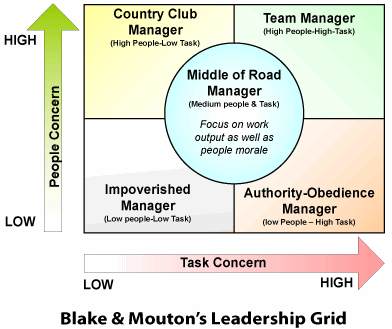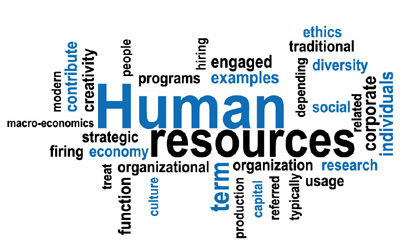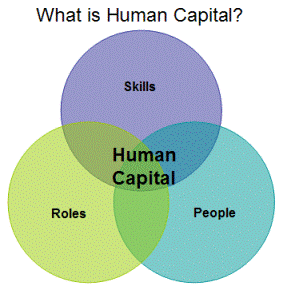 The main value of a company does not lie in its systems, controls, or machinery and equipment. As much as technology and data systems may evolve, nothing substitutes the value provided by human capital. The biggest companies in the world are recognized by their talent and the attitude of their people.
The main value of a company does not lie in its systems, controls, or machinery and equipment. As much as technology and data systems may evolve, nothing substitutes the value provided by human capital. The biggest companies in the world are recognized by their talent and the attitude of their people.
Tag: human capital
Triple Bottom Line – People Planet Profit
 Triple bottom line (abbreviated as TBL or 3BL) incorporates the notion of sustainability into business decisions. The TBL is an accounting framework with three dimensions: social, environmental (or ecological) and financial. The TBL dimensions are also commonly called the three Ps: people, planet and profits and are referred to as the “three pillars of sustainability.” Interest in triple bottom line accounting has been growing in both for-profit, nonprofit and government sectors. Many organizations have adopted the TBL framework to evaluate their performance in a broader context.
Triple bottom line (abbreviated as TBL or 3BL) incorporates the notion of sustainability into business decisions. The TBL is an accounting framework with three dimensions: social, environmental (or ecological) and financial. The TBL dimensions are also commonly called the three Ps: people, planet and profits and are referred to as the “three pillars of sustainability.” Interest in triple bottom line accounting has been growing in both for-profit, nonprofit and government sectors. Many organizations have adopted the TBL framework to evaluate their performance in a broader context.
In traditional business accounting and common usage, the “bottom line” refers to either the “profit” or “loss”, which is usually recorded at the very “bottom line” on a statement of revenue and expenses. Over the last 50 years, environmentalists and social justice advocates have struggled to bring a broader definition of “bottom line” into public consciousness, by introducing full cost accounting. For example, if a corporation shows a monetary profit, but their asbestos mine causes thousands of deaths from asbestosis, and their copper mine pollutes a river, and the government ends up spending taxpayer money on health care and river clean-up, how do we perform a full societal cost benefit analysis? The triple bottom line adds two more “bottom lines”: social and environmental (ecological) concerns.
How Strategic HR Wins The Keys To The C-Suite
So here’s the game plan for HR:
- Get educated! The books are there. The exemplars are there. The studies showing the ongoing declines are publicly available. The firms who are succeeding are known. The ship you are on is sinking. Find out why. Learn what it takes to change.
- Circulate the books to the C-suite: You don’t have to make the arguments yourself. Simply pass around the books that make the case for you.
- Change your name! I often ask HR people why they accept a name like Human Resources which implies that people are things to be exploited, rather than a name that endorses that people are actually people. They usually reply that the name doesn’t really matter if they do the right thing. My response is: if the Finance Department was called the Fraud Department, would that help or hinder their work? Having a name that says the opposite of the meaning of the function is an impediment that has to be removed.
- Develop a game plan! Be able to answer these questions, even if the C-Suite can’t: Who is your company’s core customer? Have you talked to one lately? Do you know what challenges they face? Who is the competition? What do they do well and not well? And most important, who are we? What is a realistic assessment of what we do well and not so well vis a vis the customer and the competition?
- Find champions: You are not going to do this alone. You are helping foment a necessary revolution. You need collaborators. They exist! In any large organization, there always enterprising managers who have seen the future and are already making it happen, even though they may be currently seen as rebels and troublemakers who don’t accept the current dispiriting culture. They are waiting to hear from you!
- Find pilot projects: Look around the organization. Look for managers who are already practicing Scrum and Agile in the IT department. Look for managers practicing Lean. Look for any managers who are using the Net Promoter Score. These are your potential pilot projects which will show the way forward.
- Get your ammunition ready: In any organization, for most of the time, the possibility of a fundamental discussion about how the organization is run is simply not possible. For most of the time, the door is closed. But every so often, particularly in firms that are struggling, the door opens briefly: the C-suite becomes so desperate with being on a failing track that the possibility of raising fundamental issues becomes possible, even briefly. Be ready then with your arguments:
Human Capital Importance in an Organization
 Capital is defined as resource or the input into a business. Human capital can therefore be defined as an input in employees, the ability to perform a task with the aim of producing economic value. Human skills are needed to implement a business idea. Hence human capital importance is non-ignorable in a business. The ability to perform a task is gained by an individual through learning and experience.
Capital is defined as resource or the input into a business. Human capital can therefore be defined as an input in employees, the ability to perform a task with the aim of producing economic value. Human skills are needed to implement a business idea. Hence human capital importance is non-ignorable in a business. The ability to perform a task is gained by an individual through learning and experience.
Managing Human Capital Risk
 Human resource risk is the chance that bad outcomes will occur in some aspect of HR. Those risks get attention when the bad outcomes threaten the overall organization and its goals. Then it becomes a business risk.
Human resource risk is the chance that bad outcomes will occur in some aspect of HR. Those risks get attention when the bad outcomes threaten the overall organization and its goals. Then it becomes a business risk.
Employee turnover, an example of one type of HR risk, becomes a business risk when it could threaten the viability of the business. Business risk matters because it has the attention of everyone at the top of the organization.
Among important human resource risks that affect business outcomes are class-action litigation and other compliance and regulatory issues, the loss of key employees and critical knowledge, talent-management gaps that make it difficult to get employees with needed skills, and individual employee behaviors that create liability issues (e.g., imprudent investment decisions or ethical scandals that damage brand value).
Interestingly, the most important risk associated with human capital in a survey of HR and risk managers that was conducted as part of the study was a “shortage of critical skills within your company’s workforce.”
via Human Resource Executive Online | Managing Human Capital Risk.
Driving Organizational Success Through Human Capital
Talent and Skills Shortage Top Risk for 2012
 Despite record unemployment levels across much of the US, American business leaders say one of the biggest risks they now face is a talent and skills shortage. That’s according to the 2011 Lloyd’s Risk Index, carried out by the Economist Intelligence Unit, which polled 500 C-Suite and board level executives in North America, Europe, Asia and elsewhere to assess corporate risk priorities and attitudes around the world.
Despite record unemployment levels across much of the US, American business leaders say one of the biggest risks they now face is a talent and skills shortage. That’s according to the 2011 Lloyd’s Risk Index, carried out by the Economist Intelligence Unit, which polled 500 C-Suite and board level executives in North America, Europe, Asia and elsewhere to assess corporate risk priorities and attitudes around the world.
via Talent and Skills Shortage Top Risk for 2012 According to Business Leaders: HR Human Resources.
What is Blake Mouton’s Managerial Grid?
 There is risk in not knowing how to manage people. The Blake & Mouton’s Managerial Grid is a great tool to evaluate leadership style for change and improvement.
There is risk in not knowing how to manage people. The Blake & Mouton’s Managerial Grid is a great tool to evaluate leadership style for change and improvement.
The managerial grid model (1964), developed by Robert Blake and Jane Mouton, is a behavioral leadership model. The model is an excellent way to map out different leadership styles, and an excellent way to evaluate the leadership performed by leaders and managers.
This model identifies five different leadership styles based on the concern for people and the concern for production. It is important to remember that none of the concerns are right or wrong, and the concerns are ideally balanced to the respective situational context of leadership.
Concern for People relates to the degree to which a leader considers needs of employees and team members before deciding how to accomplish a task. A high degree of concern could be coupled to a more democratic leadership style, whereas a low concern for people could be coupled to an autocratic leadership style.
Concern for Production relates to the degree to which a leader emphasizes production effectiveness and efficiency when deciding how best to accomplish tasks.
By charting the position in the grid it is possible to diagnose which leadership style is being performed, and to evaluate the appropriateness of the style of leadership.
Managing Human Capital Risk
 The potential for risk in human resources can negatively affect entire business organizations — yet only half of organizations say they have a formal plan to assess such risks. It’s up to HR leaders to better understand the risks and the potential costs they represent to the business.
The potential for risk in human resources can negatively affect entire business organizations — yet only half of organizations say they have a formal plan to assess such risks. It’s up to HR leaders to better understand the risks and the potential costs they represent to the business.
via Human Resource Executive Online – Managing Human Capital Risk.


